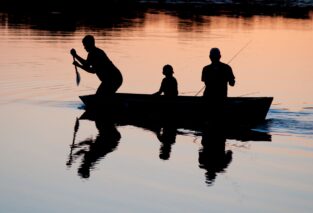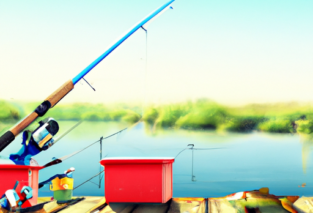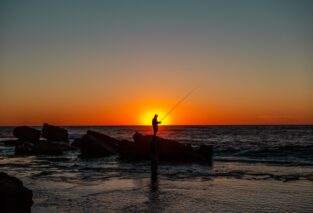If you’re an enthusiastic pike angler, or if you’ve always wanted to try your hand at pike fishing, then “Can You Go Pike Fishing: Tips and Techniques for Pike Anglers” is the ultimate guide you need. This comprehensive resource is packed with valuable information and expert advice to help you master the art of pike fishing. From essential gear and tackle recommendations to proven techniques and strategies, this guide will equip you with the knowledge and skills to reel in those elusive, formidable pike. Whether you’re a seasoned angler looking to refine your technique or a beginner eager to learn the ropes, this guide is a must-have for any pike fishing enthusiast.
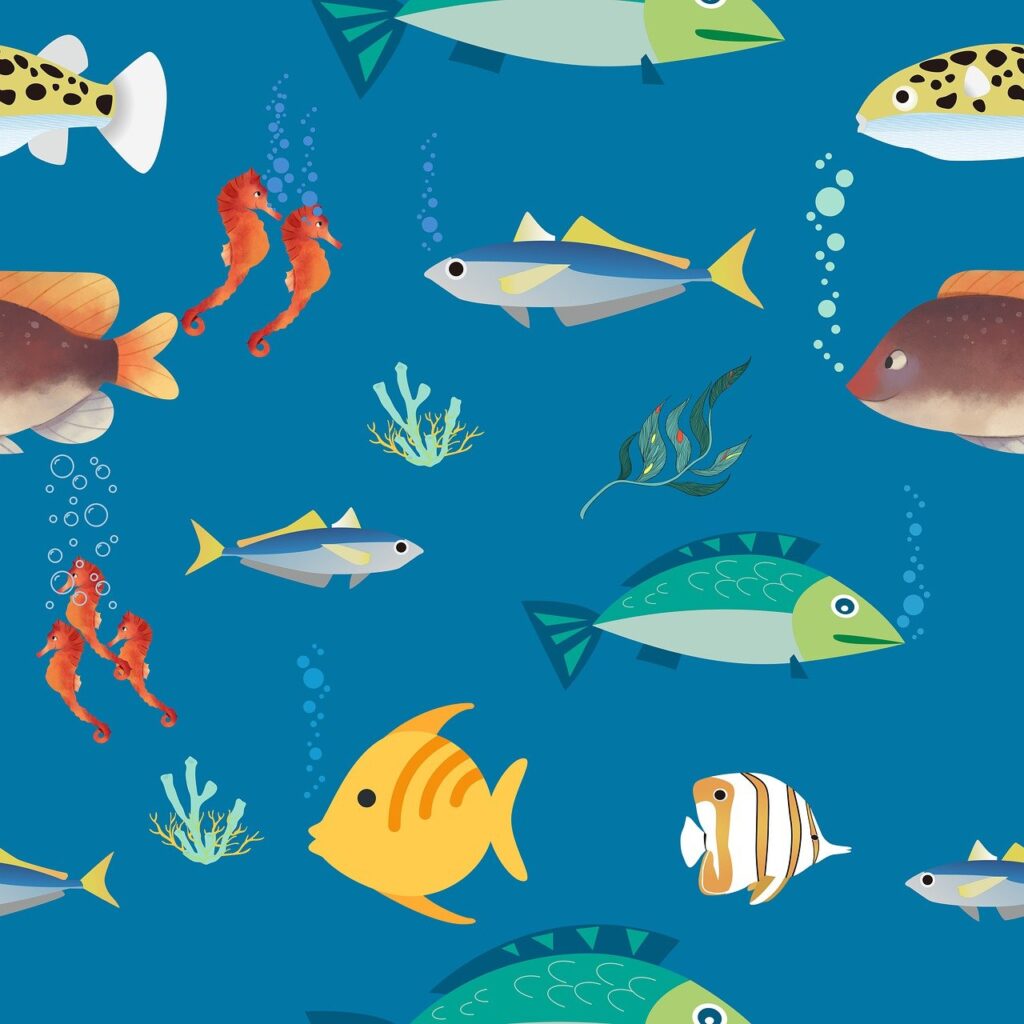
Preparing for Pike Fishing
Before you embark on your pike fishing adventure, it is essential to thoroughly prepare yourself. This involves conducting extensive research on pike fishing locations, understanding the behavior and habits of these magnificent creatures, gathering the necessary equipment, and choosing the right fishing techniques that will increase your chances of success.
Researching Pike Fishing Locations
To start your pike fishing journey on the right foot, it is crucial to research the best locations for pike fishing. Pike are highly adaptable and can be found in a wide variety of water bodies, including lakes, rivers, reservoirs, and even some coastal areas. By studying maps, consulting local fishing forums, and seeking advice from experienced anglers, you can identify the hotspots where pike are commonly found. Remember to take into consideration factors such as water clarity, depth, vegetation, and structures, as these can greatly affect pike activity.
Understanding Pike Behavior and Habits
To effectively catch pike, it is important to have a good understanding of their behavior and habits. Pike are aggressive predators and are known for their ambush-style hunting. They tend to hide in areas with ample cover, such as submerged vegetation or structures, waiting for their prey to come within striking range. By knowing their preferred habitats, feeding patterns, and seasonal movements, you can strategically plan your fishing approach and increase your chances of enticing these voracious hunters.
Gathering the Right Equipment
Equipping yourself with the right gear is vital for a successful pike fishing trip. You’ll need a sturdy fishing rod and reel combination capable of handling the fight of a powerful pike. Look for a rod with medium to heavy action and a reel with a smooth drag system. Additionally, you’ll need a variety of fishing lines suitable for pike fishing, strong and sharp hooks to secure your catch, and leader material to prevent the pike’s sharp teeth from cutting through your line. Gathering the right equipment ensures that you are well-prepared for the challenge that awaits you on the water.
Choosing the Right Pike Fishing Techniques
When it comes to pike fishing, employing the right techniques can make all the difference. There are various effective techniques that can be used to target pike, and choosing the right ones for your specific fishing conditions is essential. Some popular techniques include casting and retrieving, trolling, jigging, and drifting with deadbait. Experimenting with different techniques and adapting to the pike’s behavior and feeding patterns will increase your chances of landing that trophy-sized pike you’ve been dreaming of.
Setting up Pike Fishing Gear
Now that you’ve done your research and gathered the necessary equipment, it’s time to set up your pike fishing gear. Properly selecting your fishing rod and reel, choosing the right fishing line, using strong and sharp hooks, and understanding the importance of leader material are all crucial steps in ensuring a successful fishing experience.
Selecting the Right Fishing Rod and Reel
Choosing the right fishing rod and reel combination is essential for pike fishing. Look for a rod with enough backbone to handle the powerful strikes and fights of pike. A medium to heavy action rod with a length between 6.5 to 7.5 feet is generally recommended. For your reel, opt for a model with a smooth drag system that can handle the aggressive runs of pike. Consider the reel’s gear ratio to determine its retrieval speed. A higher gear ratio allows for faster retrieval, which can be beneficial when targeting actively feeding pike.
Choosing the Right Fishing Line
Selecting the appropriate fishing line is crucial when targeting pike. Pike have sharp teeth that can easily slice through traditional monofilament lines, so it is recommended to use a strong and abrasion-resistant line such as braided or fluorocarbon. Braided lines offer excellent strength and sensitivity, while fluorocarbon lines are virtually invisible underwater and have low stretch properties, allowing for better hooksets. Use a line with a test strength suitable for the size of pike you expect to encounter.
Using Strong and Sharp Hooks
Using strong, sharp hooks is essential for successful pike fishing. Pike have bony mouths, and a dull hook may not penetrate properly. Choose hooks specifically designed for pike fishing, with a size appropriate for the bait or lure you’ll be using. Treble hooks are commonly used for live bait fishing, while single hooks or swimbait hooks are preferred for artificial lures. Regularly inspect your hooks for sharpness and replace them if necessary to ensure optimal hooking and landing success.
Understanding the Importance of Leader Material
Leader material is a crucial component when targeting pike. Pike have sharp teeth that can fray or cut through your main fishing line. By attaching a strong leader between your main line and the hook or lure, you provide an added layer of protection. Steel leaders or heavy fluorocarbon leaders are commonly used for pike fishing. Ensure that the leader material you choose matches the strength of your main line and has enough flexibility to allow for natural bait or lure movement.
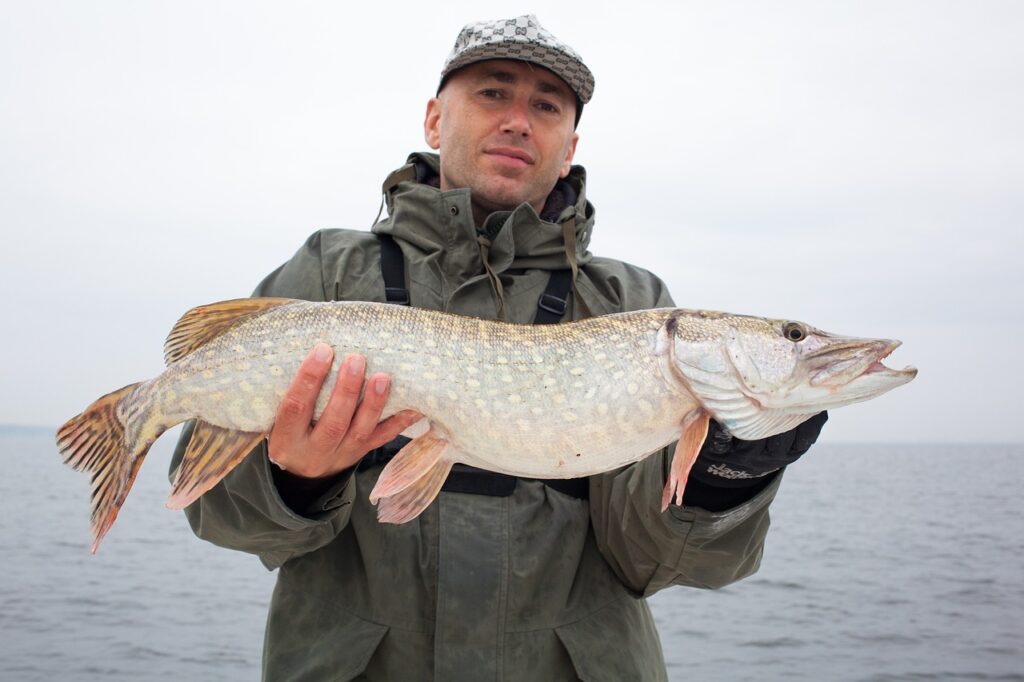
Selecting the Best Pike Baits and Lures
Knowing which baits and lures are most effective when targeting pike is essential for a successful fishing outing. Understanding pike feeding habits, selecting live baits, choosing artificial lures, and using effective pike fishing rigs will greatly increase your chances of enticing these voracious predators.
Understanding Pike Feeding Habits
Pike are opportunistic predators that will strike at a wide range of prey items. They feed on fish, amphibians, small mammals, and even birds. By understanding their feeding habits, you can tailor your bait selection to match their preferences. Pike are known to be particularly fond of fish, so using baitfish or lures that mimic fish can be highly effective.
Choosing Live Baits for Pike Fishing
Using live baits is a popular and effective method for targeting pike. Popular live bait options include large minnows, such as suckers or shiners, and smaller fish like perch or sunfish. When using live bait, it is important to rig the bait properly to entice the pike to strike. Hook the bait securely but in a way that allows for natural movement. Consider using a bobber or a float to suspend the bait at the desired depth.
Selecting Artificial Lures for Pike
Artificial lures are another excellent option when targeting pike. There is an extensive variety of artificial lures specifically designed for pike fishing, including spoons, crankbaits, jerkbaits, swimbaits, and spinnerbaits. Experiment with different types of lures to determine which ones pike in your area respond to the most. Bright colors and lures that emit vibrations or produce noise tend to be particularly effective in attracting pike.
Using Effective Pike Fishing Rigs
Using the right fishing rig can greatly enhance your chances of catching pike. One popular rig for live bait fishing is the sliding sinker rig. This rig consists of a sinker, a swivel, and a leader with the hook and bait attached. The sliding sinker allows the fish to take the bait and swim freely while minimizing resistance. For artificial lures, using a simple loop knot or a snap helps provide a natural and enticing action. Experiment with different rigs and techniques to find the one that works best for you in different fishing scenarios.
Pike Fishing Techniques
To successfully catch pike, you need to employ the right fishing techniques. Understanding casting and retrieving techniques, trolling methods, jigging approaches, and drifting with deadbait techniques will give you the edge you need to lure in these magnificent predators.
Casting and Retrieving Techniques
Casting and retrieving is a versatile technique that allows you to cover a large area of water and entice pike to strike. When casting, aim for areas with ample cover, such as weed beds, submerged structures, or drop-offs. After casting, retrieve your bait or lure at a steady pace, occasionally pausing to imitate injured prey. Varying your retrieval speed and using erratic movements can trigger a pike’s predatory instinct and increase your chances of attracting their attention.
Trolling for Pike
Trolling is an effective method for targeting pike, especially when covering vast areas of water. For this technique, you’ll need a boat or access to a kayak or canoe. Attach your bait or lure to a line and trail it behind your boat as you move at a slow to moderate speed. Consider using diving lures or planer boards to vary the depth at which your bait or lure is presented. Trolling allows you to search for active pike and offers the advantage of covering a larger fishing area compared to other techniques.
Jigging for Pike
Jigging is a popular technique that involves imparting an erratic vertical movement to the bait or lure. This technique is particularly effective when fishing in deeper water or when pike are gathered around structures or drop-offs. Choose a jighead or a weighted soft plastic lure and lower it to the desired depth. Then, use a series of lifts and drops to create an enticing action. Vary the speed and rhythm of your jigging and experiment with different lure colors to find what works best for luring in pike.
Drifting and Deadbaiting Techniques
Drifting with deadbait is a productive technique for pike fishing, especially when targeting larger specimens. Deadbait fishing involves using a dead fish as bait, often mounted on a wire trace and suspended at the desired depth using a float or a balloon. Drifting allows the bait to cover a large area and presents a tempting meal for pike. Pay attention to wind direction and current to maximize your drift and increase your chances of encountering pike.
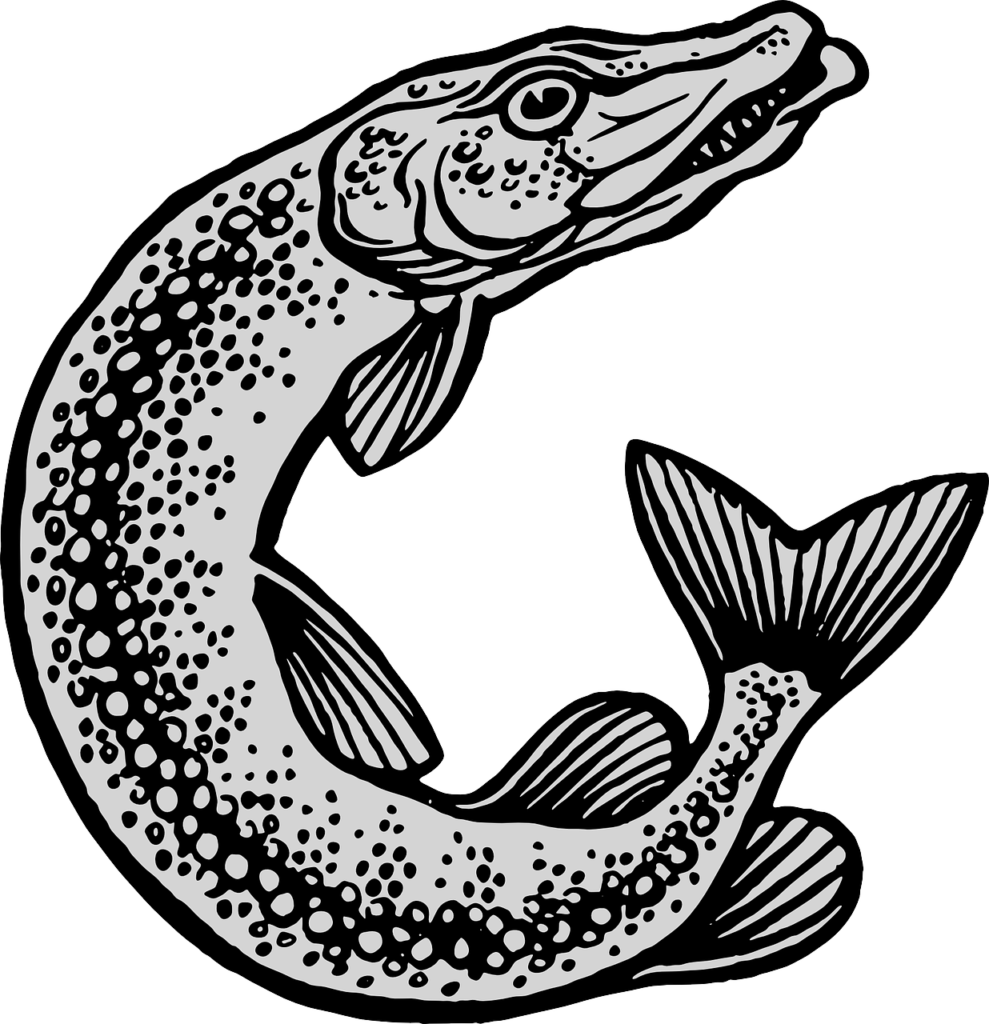
Tips for Catching Pike
While the right techniques and equipment are essential for pike fishing success, incorporating some valuable tips into your strategy can further enhance your chances of catching these elusive predators. From locating pike in different water bodies to fishing during optimal weather conditions and mastering proper hookset techniques, these tips will help you achieve a more fruitful and enjoyable fishing experience.
Locating Pike in Different Water Bodies
Pike can be found in a wide range of water bodies, and understanding their habits in each type of environment can significantly improve your chances of success. In lakes, focus on areas with submerged structures, drop-offs, or weed beds. In rivers, look for slack water areas adjacent to faster currents, as pike often wait for prey in these spots. Reservoirs and ponds often hold pike near submerged trees or rocky shorelines. By tailoring your approach to the specific water body you’re fishing, you’ll increase your chances of locating these majestic predators.
Optimal Weather Conditions for Pike Fishing
Weather conditions can greatly affect pike activity and their willingness to strike. In general, pike tend to be more active during cloudy or overcast days, as the reduced light intensity provides them with increased cover and an advantage over their prey. They are also more likely to feed during low light periods, such as early morning or late evening. Pay attention to weather forecasts and plan your fishing trips accordingly to maximize your chances of success.
Fishing during Pike Feeding Times
Understanding the feeding patterns of pike can significantly increase your chances of catching them. Pike are known to be most active during the spring and fall seasons when water temperatures are cooler. They tend to feed more aggressively in the morning and late afternoon hours. By aligning your fishing trips with these feeding times, you’ll improve your chances of encountering hungry pike and increase your overall success rate.
Mastering Proper Hookset Techniques
Mastering the proper hookset technique is crucial when targeting pike. Due to their bony mouths, pike can be challenging to hook and land successfully. When you feel a strike, resist the urge to immediately set the hook with a powerful jerk. Instead, allow the pike to turn and swim away with the bait or lure for a moment before setting the hook firmly. This technique helps ensure that the hook penetrates the fish’s mouth, increasing your chances of a solid hookset and a successful landing.
Playing and Landing Pike
Once you’ve hooked a pike, the battle has just begun. Properly playing and landing the fish is essential to avoid losing your prize catch. Managing the pike’s initial run, using proper playing techniques, preparing for pike landing, and handling and releasing pike safely are crucial aspects of the process.
Managing Pike’s Initial Run
When a pike is hooked, it will likely make a powerful initial run in an attempt to free itself. It is crucial to maintain tension on the line, keeping it taut, while allowing the pike to make its run. Avoid applying excessive pressure that could result in a snapped line or a pulled hook. Use your rod to absorb the fish’s initial burst of energy and reel in the line when the pike’s run slows down.
Using Proper Playing Techniques
Playing a pike requires finesse and patience. Avoid letting the fish rest for too long, as this can embolden it to make another powerful run. Instead, maintain a steady pressure on the line, using the flex of your rod to tire the fish gradually. Keep the pike’s head pointed up toward the surface, as this is a less energy-efficient position for the fish, reducing its ability to fight. Keep the line tensioned and avoid slack that the pike might use to shake free.
Preparing for Pike Landing
Once you’ve tired the pike sufficiently, it’s time to prepare for landing. If you are fishing from a boat, consider having a net or a gaff ready to secure the fish. If you are fishing from shore, make sure you have a firm grip on your landing tool of choice. Maintain constant pressure on the line as you guide the pike toward you. Be cautious as you approach the fish, as pike can thrash and strike unexpectedly. Carefully secure the fish and support its weight to minimize any harm.
Handling and Releasing Pike Safely
When handling pike, it is essential to prioritize their well-being. Avoid touching a pike’s gills or squeezing its belly, as this can cause injury and respiratory distress. Wet your hands before handling the fish to protect its slimy protective coating. Use long-nose pliers or a hook remover to safely remove the hook, allowing the fish to be released unharmed. If taking photos, hold the fish horizontally, supporting its weight evenly. Finally, gently release the pike back into the water, ensuring it has recovered before swimming away.
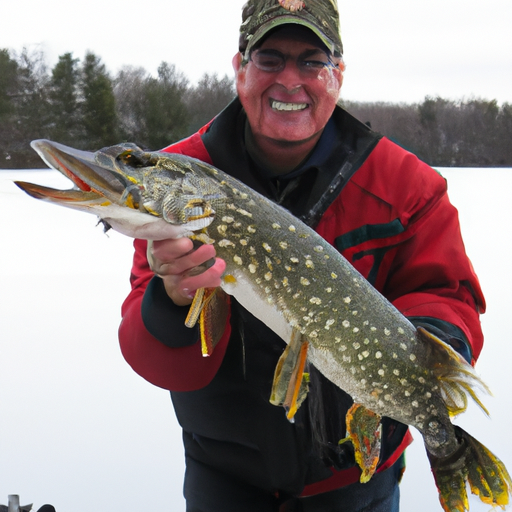
Pike Fishing Ethics and Conservation
As anglers, it is important for us to practice ethics and conservation when fishing for pike. Understanding catch and release practices, minimizing pike handling time, using appropriate fishing gear to reduce harm, and respecting pike fishing regulations are crucial in preserving pike populations for future generations.
Understanding Catch and Release Practices
Catch and release practices are vital for the conservation of pike populations. Returning the fish to the water unharmed allows them to continue their vital role in the ecosystem. When practicing catch and release, be mindful of the following: use appropriate tackle to reduce stress on the fish, land and unhook the pike swiftly, avoid damaging its gills or eyes, and minimize the time the fish spends out of the water.
Minimizing Pike Handling Time
To increase the probability of survival for released pike, it is crucial to minimize their handling time. The longer a fish is out of the water, the greater the risk of injury or stress. Plan your actions ahead and ensure that you have all the necessary tools and equipment readily available. This will help you efficiently unhook and release the fish as quickly as possible, promoting higher survival rates.
Using Appropriate Fishing Gear to Reduce Harm
Using appropriate fishing gear can significantly reduce harm to the pike and increase their chances of survival after release. Consider using barbless hooks, as they are easier to remove and cause less damage. Additionally, using fish-friendly landing nets and unhooking mats can minimize stress and protect the fish against injuries. Avoid using excessive force when handling fish, as this can cause unnecessary harm.
Respecting Pike Fishing Regulations
Respecting pike fishing regulations is essential to ensure the sustainability of these majestic creatures. Familiarize yourself with local fishing regulations regarding size limits, bag limits, catch and release guidelines, and specific seasons or areas where pike fishing may be restricted. By adhering to these regulations, you contribute to the conservation and preservation of pike populations, ensuring their availability for future generations of anglers.
Safety Considerations for Pike Fishing
While pike fishing can be a thrilling and rewarding experience, it is essential to prioritize safety at all times. Wearing appropriate fishing gear and personal floatation devices, being cautious of pike’s teeth, avoiding slippery and uneven surfaces, and being prepared for changing weather conditions are crucial elements to ensure a safe outing.
Wearing Appropriate Fishing Gear and Personal Floatation Devices
When fishing for pike, it is important to wear appropriate fishing gear and personal floatation devices (PFDs). Choose clothing that provides protection from the elements and is suitable for the prevailing weather conditions. Depending on your fishing location, wearing a PFD may be legally required, especially if you are fishing from a boat or fishing in areas with strong currents. Stay safe by never underestimating the importance of proper fishing gear and PFDs.
Beware of Pike’s Teeth
Pike have a mouth full of sharp teeth that can cause serious injuries if mishandled. When handling a pike, always be aware of its teeth and exercise caution. Avoid placing your fingers near its mouth, and use long-nose pliers or a hook remover to safely remove the hook. Unhook the fish with care, keeping your hands away from its sharp teeth to prevent accidental cuts or puncture wounds.
Avoiding Slippery and Uneven Surfaces
Pike fishing often takes place in or near water, which means slippery and uneven surfaces are common hazards. Always watch your step and be cautious when walking on slippery rocks, wet platforms, or moss-covered surfaces. Use appropriate footwear with good traction to minimize the risk of slipping and falling. Taking your time and being mindful of your surroundings will help prevent unnecessary accidents or injuries.
Being Prepared for Changing Weather Conditions
Weather conditions can change rapidly when you’re out on the water, and being prepared is crucial for your safety. Check the weather forecast before your fishing trip and be aware of any incoming storms or adverse conditions. Dress in layers to accommodate changing temperatures and bring appropriate gear such as rain gear, sun protection, and extra warm clothing. By being prepared for changing weather conditions, you can ensure a safer and more enjoyable pike fishing experience.
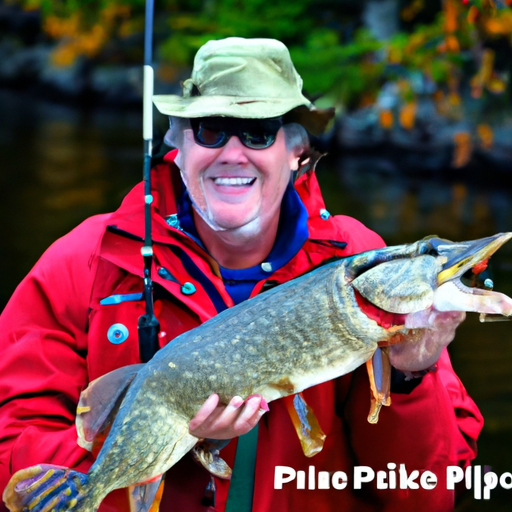
Common Mistakes to Avoid
To maximize your chances of success and enhance your pike fishing experience, it’s important to avoid common mistakes that can hinder your efforts. By learning from the experiences of others, you can steer clear of ineffective bait presentation, using incorrect fishing techniques, ignoring local fishing regulations, and not adapting to pike behavior and feeding patterns.
Ineffective Bait Presentation
One common mistake is presenting baits or lures in an ineffective manner. Pay attention to the depth at which pike are actively feeding and adjust your presentation accordingly. Ensure that your bait or lure is swimming or moving naturally in the water. Experiment with different retrieval speeds, pauses, and movements until you find what triggers a response from the pike.
Using Incorrect Fishing Techniques
Using incorrect fishing techniques can significantly reduce your chances of success when targeting pike. It is essential to research and understand the specific fishing techniques that work best for pike in your chosen fishing location. Properly adapting your techniques to suit the prevailing conditions and understanding the behavior and feeding patterns of pike will greatly increase your chances of success.
Ignoring Local Fishing Regulations
Ignoring local fishing regulations can have serious consequences, including fines and harm to fish populations. Make sure to thoroughly understand and adhere to the fishing regulations of the area where you plan to fish. This includes respecting size and bag limits, adhering to catch and release guidelines, and being aware of any seasonal or area-specific restrictions. Conservation and ethical angling practices should always be a priority.
Not Adapting to Pike Behavior and Feeding Patterns
Pike behavior and feeding patterns can vary greatly depending on the time of year, water temperature, and the specific water body you are fishing. It is essential to adapt your fishing strategies accordingly. Pay attention to the prevailing conditions, the pike’s response to your techniques, and adjust your approach as necessary. Flexibility and adaptability are key to increasing your success rate when targeting pike.
Final Thoughts
Pike fishing offers excitement, challenges, and the opportunity to connect with nature. By following the tips and techniques outlined in this article, you’ll be well-prepared to embark on your pike fishing adventure. Remember to research your fishing location, understand pike behavior and feeding habits, gather the appropriate gear, and choose the right techniques. Additionally, prioritize safety, practice catch and release, and respect fishing regulations. Enjoy the thrill of pike fishing, continue to learn and improve your skills, respect the pike and its habitat, and share the joy of this exhilarating sport with others. Happy fishing, and may your next pike fishing expedition be filled with unforgettable memories and trophy-sized catches!



